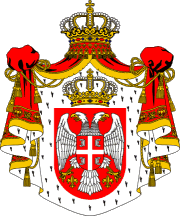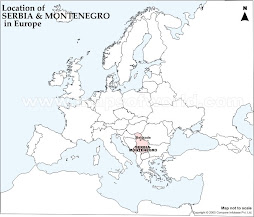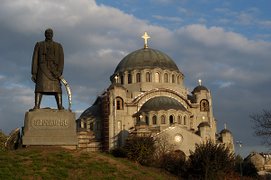Some Wonders
Labels:
Cultural











(*) Acropolis, Greece: This set-in-stone wonder attracts millions of visitors each year to its famed Parthenon and statues of Greek gods and goddesses.
(*) Alhambra, Spain: The palace and citadel—once the residence of the Moorish caliphs who governed southern Spain—feature mosaics, arabesques and mocarabe, or honeycomb work
(*) Angkor, Cambodia: The archaeological site in Siem Reap was the capital of the Khmer (Cambodian) empire from the ninth to 15th centuries. The 12th century ruins include Angkor Wat and Angkor Thom
(*) Christ Redeemer Statue, Brazil: The outstretched arms of the 125-foot statue of the Christ the Redeemer overlooks Rio de Janeiro from atop 2,343-foot Mount Corcovado
(*) Colosseum, Italy: The 50,000-seat amphitheater in Rome was inaugurated in A.D. 80 and served as the backdrop for thousands of gladiators who dueled to the death
(*) Easter Island, Chile: Hundreds of massive stone busts, or Moais, are all that remains from the prehistoric culture that crafted them between 400 and 1,000 years ago as an homage to deceased ancestors.
(*) Great Wall of China: The 4,160-mile barricade running from east to west is the world's longest man-made structure. The construction of the wall took place over hundreds of years, beginning in the seventh century B.C
(*) Hagia Sophia, Turkey: Also called the Church of Holy Wisdom, the soaring cathedral was built in 537 A.D. at Constantinople, today's Istanbul. In 1453, Constantinople fell to the Ottomans and the church became a mosque. Not until the landmark became a museum in 1935 were the Christian mosaics revealed
(*) Kiyomizu Temple, Japan: Kyoto's Kiyomizu-dera, which means Clear Water Temple, was founded by a Buddhist sect in 798 and rebuilt in 1633 after a fire. A drink from its waterfall is believed to confer health, longevity and success
(*) Machu Picchu, Peru: Built by the Incan Empire in the 15th century, Machu Picchu's walls, palaces, temples and dwellings are perched in the clouds at 8,000 feet above sea level in the Andes
(*) Petra, Jordan: This ancient city in southwestern Jordan, built on a terrace around Wadi Musa, or Valley of Moses, was the capital of the Arab kingdom of the Nabateans. The city is famous for water tunnels and stone structures carved in the rock
(*) Pyramid at Chichen Itza, Mexico: This pyramid was part of a sacred site in an important Mayan center on Mexico's Yucatan peninsula. Built according to the solar calendar, shadows at the fall and spring equinoxes are said to look like a snake crawling down the steps, similar to the carved serpent at the top
(*) Pyramids of Giza, Egypt: The only surviving structures of the original seven wonders, the three pyramids were built as tombs for pharaohs 4,500 years ago. Nearby is the Great Sphinx statue.
(*) Stonehenge, Britain: How and why this circular monument of massive rocks was created between 3,000 and 1,600 B.C. is unknown, but some experts say the stones were aligned as part of a sun-worshipping culture or astronomical calendar.
(*) Taj Mahal, India: The white marble-domed mausoleum in Agra combines Indian, Persian and Islamic styles and was built by a 17th century Mogul emperor for his favorite wife, who died in childbirth.
(*) Timbuktu, Mali: Two of West Africa's oldest mosques, the Djingareyber, or Great Mosque, and the Sankore mosque built during the 14th and early 15th centuries can still be seen here in the northern Sahara Desert. Founded about A.D. 1,100, Timbuktu was a flourishing caravan center and a leading spiritual and intellectual center.
(*) Eiffel Tower, France: The 985-foot tower, built in 1889 for the International Exposition, symbolizes Paris. The open-lattice iron icon is the City of Light's tallest structure
(*) Kremlin and St. Basil's Cathedral, Russia: Domes with golden cupolas surrounded by red brick walls are at the heart of Moscow's Kremlin. The Cathedral of St. Basil the Blessed on adjacent Red Square features nine towers of different colors
(*) Statue of Liberty, New York: A gift of the French government, the 305-foot statue in New York Harbor has welcomed immigrants and symbolized freedom since 1886
(*) Sydney Opera House, Australia: With a roof resembling a ship in full sail, the opera house is situated on Bennelong Point reaching into Sydney's harbor. It was designed by Danish architect Jorn Utzon and opened by Queen Elizabeth II in 1973
(*) Alhambra, Spain: The palace and citadel—once the residence of the Moorish caliphs who governed southern Spain—feature mosaics, arabesques and mocarabe, or honeycomb work
(*) Angkor, Cambodia: The archaeological site in Siem Reap was the capital of the Khmer (Cambodian) empire from the ninth to 15th centuries. The 12th century ruins include Angkor Wat and Angkor Thom
(*) Christ Redeemer Statue, Brazil: The outstretched arms of the 125-foot statue of the Christ the Redeemer overlooks Rio de Janeiro from atop 2,343-foot Mount Corcovado
(*) Colosseum, Italy: The 50,000-seat amphitheater in Rome was inaugurated in A.D. 80 and served as the backdrop for thousands of gladiators who dueled to the death
(*) Easter Island, Chile: Hundreds of massive stone busts, or Moais, are all that remains from the prehistoric culture that crafted them between 400 and 1,000 years ago as an homage to deceased ancestors.
(*) Great Wall of China: The 4,160-mile barricade running from east to west is the world's longest man-made structure. The construction of the wall took place over hundreds of years, beginning in the seventh century B.C
(*) Hagia Sophia, Turkey: Also called the Church of Holy Wisdom, the soaring cathedral was built in 537 A.D. at Constantinople, today's Istanbul. In 1453, Constantinople fell to the Ottomans and the church became a mosque. Not until the landmark became a museum in 1935 were the Christian mosaics revealed
(*) Kiyomizu Temple, Japan: Kyoto's Kiyomizu-dera, which means Clear Water Temple, was founded by a Buddhist sect in 798 and rebuilt in 1633 after a fire. A drink from its waterfall is believed to confer health, longevity and success
(*) Machu Picchu, Peru: Built by the Incan Empire in the 15th century, Machu Picchu's walls, palaces, temples and dwellings are perched in the clouds at 8,000 feet above sea level in the Andes
(*) Petra, Jordan: This ancient city in southwestern Jordan, built on a terrace around Wadi Musa, or Valley of Moses, was the capital of the Arab kingdom of the Nabateans. The city is famous for water tunnels and stone structures carved in the rock
(*) Pyramid at Chichen Itza, Mexico: This pyramid was part of a sacred site in an important Mayan center on Mexico's Yucatan peninsula. Built according to the solar calendar, shadows at the fall and spring equinoxes are said to look like a snake crawling down the steps, similar to the carved serpent at the top
(*) Pyramids of Giza, Egypt: The only surviving structures of the original seven wonders, the three pyramids were built as tombs for pharaohs 4,500 years ago. Nearby is the Great Sphinx statue.
(*) Stonehenge, Britain: How and why this circular monument of massive rocks was created between 3,000 and 1,600 B.C. is unknown, but some experts say the stones were aligned as part of a sun-worshipping culture or astronomical calendar.
(*) Taj Mahal, India: The white marble-domed mausoleum in Agra combines Indian, Persian and Islamic styles and was built by a 17th century Mogul emperor for his favorite wife, who died in childbirth.
(*) Timbuktu, Mali: Two of West Africa's oldest mosques, the Djingareyber, or Great Mosque, and the Sankore mosque built during the 14th and early 15th centuries can still be seen here in the northern Sahara Desert. Founded about A.D. 1,100, Timbuktu was a flourishing caravan center and a leading spiritual and intellectual center.
(*) Eiffel Tower, France: The 985-foot tower, built in 1889 for the International Exposition, symbolizes Paris. The open-lattice iron icon is the City of Light's tallest structure
(*) Kremlin and St. Basil's Cathedral, Russia: Domes with golden cupolas surrounded by red brick walls are at the heart of Moscow's Kremlin. The Cathedral of St. Basil the Blessed on adjacent Red Square features nine towers of different colors
(*) Statue of Liberty, New York: A gift of the French government, the 305-foot statue in New York Harbor has welcomed immigrants and symbolized freedom since 1886
(*) Sydney Opera House, Australia: With a roof resembling a ship in full sail, the opera house is situated on Bennelong Point reaching into Sydney's harbor. It was designed by Danish architect Jorn Utzon and opened by Queen Elizabeth II in 1973






1 comment:
Great read tthanks
Post a Comment